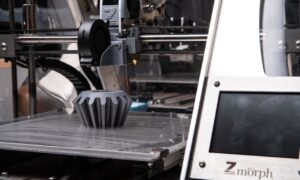Are you interested in learning the latest technologies and developments in stainless steel fabrication? If you stay ahead of the curve, you can access the latest tools and get an edge in the industry. To know more about Stainless steel fabrication, read this article.
Keep reading as we explore the future of stainless steel fabrication and its impact on the industry. This guide will cover some of the latest technological advancements, industry trends, and future developments to look out for.
We also discuss each development’s main benefits and disadvantages and help you understand how to prepare for the future in the stainless steel fabrication industry.
Technologies are advancing
Let’s explore some of the latest stainless steel fabrication industry advancements – from AI to automation.
Artificial Intelligence
In the stainless steel fabrication industry, making informed decisions during manufacturing is essential. You need the correct information at the right time during manufacturing. Many automated processes, from sheet cutting to automated beamlines, need to provide optimal results. By implementing manufacturing AI, you can educate your automated processes with the correct information to ensure the best results.
With the current labour shortages in the manufacturing industry, reducing reliance on manual intelligence is essential. Artificial intelligence fills this gap in your manufacturing strategy, providing accuracy and information to enhance these processes.
3D Printing
3D printing makes the manufacturing process for stainless steel fabricators simple, straightforward, and efficient – even for complex parts and supplies. During the 3D printing process, the layers of stainless steel powder are bound with binder jetting, a bonding agent.
This combination of materials allows for safe 3D printing of manufacturing supplies and intricate parts. Intricate parts can require complex manufacturing processes. In automating the manufacturing of these parts, you can ensure quality and efficiency every time.
Machine Learning
Using machine learning, you can ensure your fabrication facility is never faulty. Machine learning offers a predictive maintenance feature, allowing you to know when the signs point toward failure for your manufacturing equipment. This technology is invaluable in maximizing productivity by reducing any production line delays.
Robotics
The current labour shortages in the manufacturing industry present a challenge to productivity. Robotics for manufacturing gives the opportunity for manufacturing companies to automate manual processes and reduce their dependence on manual labour. Time-consuming and repetitive manual tasks can be delegated to robotics to account for the lack of workers.
Automation
Automation reduces human error in manufacturing, which can impact productivity and cause delays, losses, and waste. If you’re looking for new ways to improve productivity and profitability in the stainless steel fabrication industry, you must look towards automation technology.
Changes in Industry Trends and Demands
To help you understand what the future looks like in the stainless steel fabrication industry, below is a list of some of the changes in industry trends and demands:
- Eco-friendly solutions – There is an increased demand for sustainable and eco-friendly solutions in the metals manufacturing industry, driving innovation for sustainable solutions.
- Customization – There is an increased interest in customization and personalization for stainless steel products. Each business’s needs differ in size, function, and scalability.
- Construction and industrial industries – The increasedadoption of stainless steel supplies in the construction and industrial industries call for a wider variety of construction and industrial products.
- Digitization – There is an increased focus on digitization in the industry for data-led management. ERP manufacturing software is helping to drive more intelligence in project management for stainless steel fabricators. However, cybersecurity protection is also a consideration when cloud-based technologies are used in any working environment.
Impact on the Industry
The changing demands and innovations are affecting core operations in the stainless steel fabrication industry. Here are some of the benefits to consider:
- Improved productivity and efficiency – By streamlining manual processes and enhancing insights for management, there can be a shift in productivity and efficiency in the steel fabrication industry.
- Improved cost efficiency– By implementing solutions that provide more sustainability, and that can preemptively spot maintenance issues, fabricators can streamline costs and reduce waste.
- Quality control – Automating processes decreases the opportunity for manual error, which causes more effective quality control within stainless steel manufacturing environments.
Now, let’s cover some of the challenges facing the stainless steel fabrication industry:
- Labour shortages – With the current labour shortages in industrial environments, there comes a need for innovation and decreased reliance on manual labour and human intelligence.
- Adoption challenges – With innovative technology comes the need for an extensive offering of onboarding and the challenges of adopting new solutions.
- Resistance to change – There could be some resistance from employees when changing elements of your business. This resistance could act as a barrier to innovation and adopting new technologies.
Preparing for the Future
The changing trends, demands, and challenges in the stainless steel fabrication industry require increased emphasis on adaptation and evolution. Business leaders, stakeholders, and project managers within the industry must focus on adopting new solutions that provide the following:
- Automation – There’s a need to reduce reliance on the workforce. There are no signs that the labour shortages will relent any time soon.
- Training – When adopting new solutions, thinking about restructuring your employee training and onboarding is ideal.
- Data analysis – To gain a fuller picture of your progress in terms of productivity, you must implement data-driven solutions and gain more insight into manufacturing processes, management efficiency, and quality control.
Conclusion
The stainless steel fabrication sphere is changing, and these changes come with new challenges that require increased business intelligence. You can lean on technological advancements to improve your business intelligence and keep up with changing demands, innovations, and stainless steel fabrication industry shortages.
These new advancements will provide automation, efficiency, and quality control for improved operations and decreased vulnerability to shortages. Staying up-to-date on the latest industry trends will allow you to prepare your business for what’s to come and evolve with the changing climate.



































